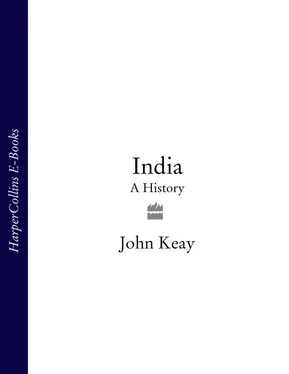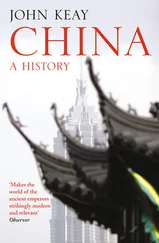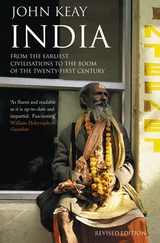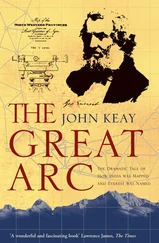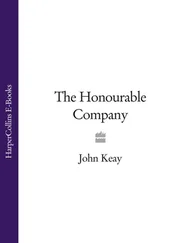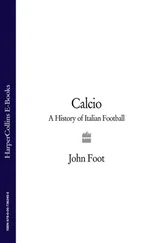When Manu was washing his hands one morning, a small fish came into his hands along with the water. The fish begged protection from Manu saying ‘Rear me. I will save thee.’ The reason stated was that the small fish was liable to be devoured by the larger ones, and it required protection till it grew up. It asked to be kept in a jar, and later on, when it outgrew that, in a pond, and finally in the sea. Manu acted accordingly.
[One day] the fish forewarned Manu of a forthcoming flood, and advised him to prepare a ship and enter into it when the flood came. The flood began to rise at the appointed hour, and Manu entered the ship. The fish then swam up to him, and he tied the rope of the ship to its horn [perhaps it was a swordfish], and thus passed swiftly to the yonder northern mountain. There Manu was directed to ascend the mountain after fastening the ship to a tree, and to disembark only after the water had subsided.
Accordingly he gradually descended, and hence the slope of the northern mountain is called Manoravataranam, or Manu’s descent. The waters swept away all the three heavens, and Manu alone was saved. 1
Such is the earliest version of the Flood as recorded in the Satapatha Brahmana , one of several wordy appendices to the sacred hymns known as the Vedas which are themselves amongst the oldest religious compositions in the world. Couched in the classical language of Sanskrit, some of the Vedas date from before the first millennium BC. Together with later works like the Brahmanas , plus the two great Sanskrit epics, the Mahabharata and the Ramayana , they comprise a glorious literary heritage whence all knowledge of India’s history prior to C500 BC has traditionally been derived.
Brief and to the point, the story of Manu and the Flood served its purpose of introducing a new progenitor of the human race and, incidentally, explaining the name of a mountain. Such, however, was too modest an interpretation for later generations. Myth, the smoke of history, is seen to signal new and more relevant meanings when espied from the distance of later millennia. In time the predicament of the small fish liable to be devoured by larger fish became a Sanskrit metaphor for an anarchic state of affairs ( matsya-nyaya ) equivalent to ‘the law of the jungle’ in English. Manu’s flood, like Noah’s, came to be seen as the means of putting a stop to this chaos. And who better to orchestrate matters and so save mankind than Lord Vishnu? A minor deity when the Vedas were composed, Vishnu had since soared to prominence as the great preserver of the world in the Hindu pantheon and the second member of its trinity. Thus, in due course, the Flood became a symbol of order-out-of-chaos through divine intervention, and the fish ( matsya ) came to be recognised as the first of the nine incarnations ( avatara ) of Lord Vishnu. Myth, howsoever remote, serves the needs of the moment. So does history, in India as elsewhere.
Some historians have dated the Flood very precisely to 3102 BC, this being the year when, by elaborate computation, they conclude that our current era, the Kali Yug in Indian cosmology, began and when Manu became the progenitor of a new people as well as their first great king and law-giver. It is also the first credible date in India’s history and, being one of such improbable exactitude, it deserves respect.
Other historians, while conceding the importance of 3102 BC, have declared it to be not the date of the Flood but of the great Bharata war. A Trojan-style conflict fought in the vicinity of Delhi, the war involved both gods and men and was immortalised in the Sanskrit verse epic known as the Mahabharata , the composition of whose roughly 100,000 stanzas constituted something of an epic in itself. This war, not the flood, was the event that marked the beginning of our present era and must, it is argued, therefore belong to the year 3102 BC. Complex astronomical calculations are deployed in support of this dating, and an inscription carved on a stone temple at Aihole in the south Indian state of Karnataka is said to confirm it.
But the Aihole memorialist, endowing his temple 1600 kilometres from Delhi and nearly four thousand years later, may have got it wrong. According to the genealogical listings in the Puranas , a later collection of ‘ancient legends’, ninety-five generations passed away between the Flood and the war; other evidence based on sterner, more recent, scholarship agrees that the war was much later than the fourth millennium BC. This greatest single event in India’s ancient history, and the inspiration for the world’s longest poem, did not occur until ‘C1400 BC’ according to the History and Culture of the Indian People , a standard work of many volumes commissioned in the 1950s to celebrate India’s liberation from foreign rule and foreign scholarship.
Nevertheless, 3102 BC sticks in the historical gullet. Such are the dismal uncertainties of early Indian chronology that no slip of the chisel is going to deny the historian the luxury of a real date. Corroboration of the idea that it may, after all, apply to a Flood has since come from the excavations in distant Iraq of one of Mesopotamia’s ancient civilisations. There too archaeologists have found evidence of an appalling inundation. It submerged the Sumerian city of Shuruppak, and has been dated with some confidence to the late fourth millennium BC. In fact, 3102 BC would suit it very well.
This Sumerian inundation, and the local Genesis story in the Epic of Gilgamesh which probably derived from it, is taken to be the origin of the legend of the Flood which eventually found its way into Jewish and Christian tradition. Yet in many respects the Sumerian account is more closely echoed in the Indian version than in the Semitic. For instance, just as in later Hindu tradition Manu’s fish becomes an incarnation of the great god Vishnu, so the Sumerian deity responsible for saving mankind is often represented in the form of a fish. ‘It is the agreement in details which is so striking,’ according to Romila Thapar. 2The details argue strongly for some common source for this most popular of Genesis myths, and scholars like Thapar, ever ready to expose cultural plagiarism, see both Manu and Noah as relocated manifestations of a Sumerian prototype.
The tendency to synchronise and subordinate things Indian to parallel events and achievements in the history of countries to the west of India is a recurrent theme in Indian historiography and has rightly incurred the wrath of some Indian historians. So much so that they sometimes go to the other extreme of denying that any creative impetus, any technological invention, even any stylistic convention, ever reached India from the west – or, indeed, the West. And in the case of the Flood they may have a point. Subject to the annual deluge of the monsoon and living for the most part on the flat alluvial plains created by notoriously errant river systems, the people of north India have always had far more experience of floods, and far more reason to fear them, than their neighbours in the typically more arid lands of western Asia.
Floods, though now associated more with the eastern seaboard of the Indian subcontinent and Bangladesh, still annually inundate vast areas of the Ganga and Indus basins. They have always done so. One such Gangetic flood, dated by archaeologists to about 800 BC, destroyed the town of Hastinapura which, after the great Bharata war, had become the capital of the descendants of Arjuna, one of the war’s main protagonists. Since the flooding of Hastinapura is also recorded in Sanskrit textual tradition, and since the same tradition says that the town was then under its seventh ruler since the war, an approximate date for the war itself of about 975 BC has been postulated.
Читать дальше
